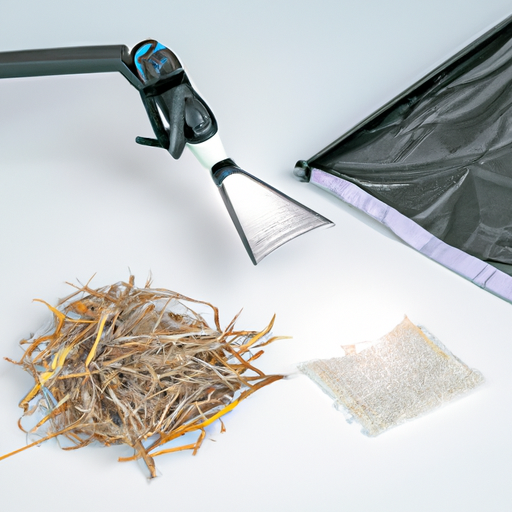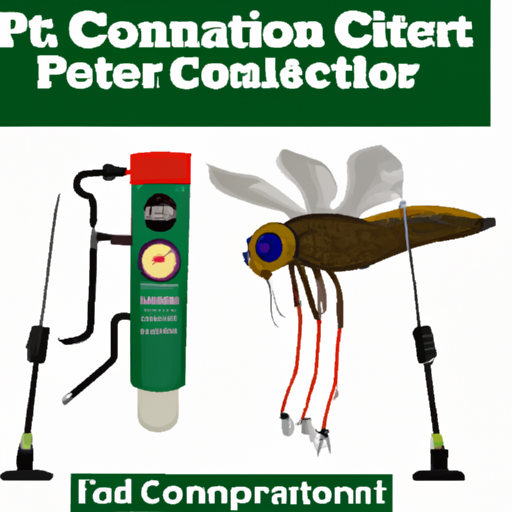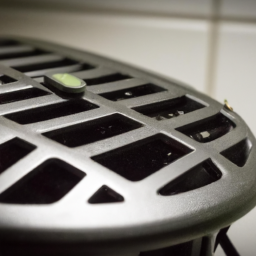In this article, you will learn about various professional fly control options that are available to help you combat pesky flies. We will discuss methods such as fly traps, fly baits, and insecticides, as well as their effectiveness and potential drawbacks. By the end, you will have a better understanding of the different options at your disposal and be able to make an informed decision on how to best tackle the issue of flies.
Biological Control Methods
Introduction to Biological Control
When it comes to controlling flies and other pests, there are various methods available. One effective approach is biological control, which involves using natural enemies to manage pest populations. This method can be an environmentally friendly alternative to chemical control methods. Biological control agents, such as parasites, predators, and pathogens, can target specific pests and help regulate their numbers.
Strategies for Biological Control
There are different strategies for implementing biological control. One common approach is the introduction of natural enemies that are not present in an area. These natural enemies can be imported from other regions where they are known to control the target pests effectively. Another strategy involves augmenting existing populations of natural enemies by releasing them in larger numbers to enhance their impact on pest populations.
Benefits of Biological Control
Biological control offers several benefits. It is a sustainable method that does not rely heavily on chemical pesticides, reducing the risk of environmental pollution. It targets specific pests, minimizing harm to beneficial insects. Biological control agents can also establish themselves in the ecosystem, providing long-term control of pests. Additionally, this method can be cost-effective, as the natural enemies can reproduce and persist in the environment, reducing the need for repeated applications.
Chemical Control Methods
Using Insecticides for Fly Control
In situations where immediate control is required, chemical control methods can be effective. Insecticides, specifically designed for fly control, can be used to kill adult flies or disrupt their life cycle. These insecticides come in different formulations, including sprays, baits, and foggers. It is essential to choose the appropriate insecticide based on the fly species and the area to be treated.
Types of Insecticides
There are various types of insecticides available for fly control. Contact insecticides kill flies upon direct contact, while residual insecticides have a longer-lasting effect, providing ongoing control for a specific period. Insect growth regulators (IGRs) inhibit the development of flies, preventing them from reaching the adult stage. It is crucial to follow the instructions and safety guidelines provided by the manufacturer when using insecticides.
Safety Considerations for Chemical Control
While chemical control methods can be effective, it is important to consider safety precautions. Insecticides can pose risks to human health and the environment if not used correctly. Always wear appropriate protective clothing and follow the recommended application rates and timings. Furthermore, ensure that insecticides are stored securely and out of reach of children and pets.
Mechanical Control Methods
Fly Traps and Baits
Mechanical control methods rely on physically trapping or killing flies. Fly traps and baits are commonly used to attract and capture flies. There are different types of fly traps available, including sticky traps and pheromone-based traps. These traps lure flies with attractive scents or color patterns, leading them to a sticky surface or a container where they are unable to escape. Fly baits can also be used, with chemicals that attract and kill flies upon ingestion.
Fly Swatters and Electronic Zappers
For immediate control, fly swatters and electronic zappers can be effective. Fly swatters are simple handheld devices that allow you to physically swat and kill flies. Electronic zappers, on the other hand, use an electric grid or light to attract and electrocute flying insects. These methods can be useful for quick fly control in small areas or for eliminating individual flies.
Fly Screens and Netting
To prevent flies from entering buildings or specific areas, fly screens and netting can be installed. These physical barriers create a barrier between flies and the environment, preventing their entry. Fly screens are often used in windows and doors, while netting can be employed in larger areas or outdoor spaces. Proper installation and maintenance of these barriers are crucial in ensuring their efficacy.
Physical Control Methods
Sanitation and Hygiene Practices
One of the most essential and effective methods of fly control is maintaining proper sanitation and hygiene practices. Flies are attracted to areas with accessible food sources and breeding sites. Implementing regular cleaning routines and disposing of waste properly can help reduce fly populations. Cleaning up spills, covering food, and regularly emptying trash bins are simple yet effective practices for fly control.
Maintenance of Clean and Dry Spaces
Flies thrive in damp and dirty environments. Keeping spaces clean and dry can help deter their infestation. Regular mopping, drying wet areas, and fixing leaky pipes can help eliminate moisture, discouraging fly breeding. In outdoor areas, removing standing water or treating it appropriately can also prevent the development of fly larvae.
Exclusion Techniques for Fly Prevention
Preventing flies from entering buildings or specific areas can be achieved through exclusion techniques. Seal cracks and gaps in windows, doors, and walls to deny flies access. Install air curtains or air doors in entryways to create barriers and maintain airflow while preventing fly entry. These techniques can significantly reduce the number of flies entering and disturbing the premises.
Integrated Pest Management
Understanding IPM Approach
Integrated Pest Management (IPM) is a holistic approach to pest control. It combines various control methods, including biological, chemical, mechanical, and physical strategies, to manage pest populations effectively. The goal of IPM is to minimize pest damage while minimizing the use of chemical pesticides. By integrating different control methods, IPM seeks to create a sustainable and long-term solution to pest problems.
Combining Different Control Methods
In fly control, IPM involves implementing a combination of control methods based on the specific situation. Biological control agents can be introduced or augmented, and mechanical control methods such as traps and screens can be utilized. Chemical control methods are used only when necessary and with caution, considering their potential risks. The different methods work together to create a comprehensive and effective fly control program.
Benefits of IPM in Fly Control
IPM offers several advantages over singular control methods. It reduces the reliance on chemical pesticides, decreasing the risk of environmental contamination and adverse effects on beneficial insects. IPM also allows for greater flexibility in adjusting control measures based on the pest population and environmental conditions. Moreover, by utilizing multiple control methods, IPM provides a more comprehensive and long-lasting solution to fly control.
Professional Fly Control Services
Hiring Pest Control Experts
In some cases, controlling fly infestations may require the assistance of professional pest control services. Pest control experts have the knowledge, experience, and specialized equipment to effectively manage fly populations. They can identify the fly species, assess the extent of the infestation, and develop a customized control plan tailored to the specific situation. Professional intervention may be necessary for severe or persistent fly problems.
Benefits of Professional Fly Control
Professional fly control services offer several benefits. Pest control experts are trained in identifying the source of infestations and implementing appropriate control methods. They have access to specialized products and techniques that may not be readily available to the general public. Professional fly control can provide a more thorough and efficient solution, ensuring the complete removal and prevention of flies.
Choosing the Right Service Provider
When hiring professional fly control services, it is important to choose the right service provider. Look for reputable companies with relevant licenses and certifications. Consider their experience and expertise in dealing with fly control specifically. Read reviews and seek recommendations from others who have utilized their services. By selecting a reliable and proficient service provider, you can ensure effective fly control and peace of mind.
Organic Fly Control Methods
Natural Repellents and Sprays
Organic fly control methods prioritize the use of natural repellents and sprays. These products rely on plant-based ingredients or essential oils to repel flies. Substances like citronella, eucalyptus, and lemongrass are known to have insect-repelling properties. Natural repellents can be applied to surfaces, diffused, or used in spray form to deter flies from entering or landing on treated areas.
Essential Oils for Fly Control
Certain essential oils are effective in repelling flies and can be utilized in fly control efforts. Peppermint oil, lavender oil, and tea tree oil are among the essential oils known to have fly-repelling properties. These oils can be added to cleaning solutions, used in diffusers, or mixed with carrier oils for direct application. Using essential oils offers a more natural and chemical-free approach to fly control.
Implementing Organic Practices
In addition to using organic repellents, implementing organic practices can contribute to fly control. This includes maintaining organic waste management systems, utilizing natural fertilizers and pesticides, and promoting biodiversity to attract natural enemies of flies. By adopting organic practices, you can create a more sustainable and environmentally friendly approach to fly control.
Fly Control for Different Environments
Fly Control in Residential Areas
In residential areas, fly control is essential for maintaining a clean and healthy living environment. To control flies effectively, residents can employ a combination of strategies, including biological control agents, mechanical traps, and physical barriers. Regular cleaning, proper waste management, and exclusion techniques play crucial roles in preventing fly infestations in homes.
Fly Control in Commercial Buildings
In commercial buildings, fly control is vital for businesses to maintain cleanliness and hygiene standards. Depending on the type of business, a combination of control methods may be necessary. For example, restaurants may benefit from the use of fly traps and screens, while food processing facilities may require more advanced control methods, such as professional pest control services.
Fly Control in Agricultural Settings
In agricultural settings, fly control is crucial for maintaining the health and productivity of livestock and crops. Biological control methods, such as the introduction of parasitic wasps or predatory mites, can be effective in reducing fly populations. Good sanitation practices, proper manure management, and the use of fly traps and baits are also important in controlling flies in agricultural environments.

Preventing Fly Infestations
Proper Waste Management
Proper waste management is key to preventing fly infestations. Flies are attracted to decaying organic matter, such as food waste and animal feces. Implementing effective waste disposal systems, ensuring lids on trash bins are secure, and promptly removing waste can help reduce fly breeding sites and deter fly infestations.
Eliminating Breeding Grounds
Flies require suitable breeding grounds to reproduce. Eliminating potential breeding sites can significantly reduce fly populations. Regularly cleaning and disinfecting areas where flies may lay their eggs can help break their life cycle. In outdoor areas, draining standing water and treating stagnant pools can prevent the development of fly larvae.
Educating and Training Personnel
In commercial settings, educating and training personnel about fly control practices are crucial. Ensuring employees are aware of the importance of sanitation and proper waste management can help prevent fly infestations. Training staff on the use of fly traps, screens, and other control methods can also contribute to effective fly control in commercial environments.
Conclusion
In conclusion, there are numerous professional fly control options available to effectively manage fly infestations. Biological control methods offer sustainable and targeted approaches, while chemical control methods provide immediate relief. Mechanical control methods rely on physical trapping or killing of flies, and physical control methods emphasize proper sanitation and exclusion techniques. Integrated Pest Management combines different control methods for a comprehensive solution. Professional fly control services can provide expertise and specialized tools. Organic methods offer natural alternatives, and fly control strategies can be tailored to different environments. By implementing the right control methods and preventive measures, a fly-free environment can be maintained, ensuring cleanliness and hygiene. So, next time you encounter pesky flies, remember the various professional fly control options at your disposal.








